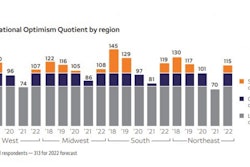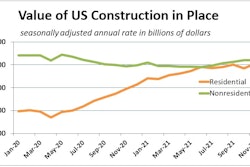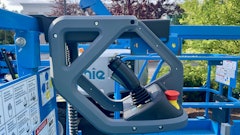
Tough topic this month. If you have time for a 40- to 50-page dissertation, we could probably make a dent in operation planning, financing, cash flow and profit planning. There is just so much to cover, corresponding to juggling eight to 10 balls – which we all know is almost impossible to do.
Initially, I was asked to cover new and used equipment pricing and availability this month. Ha, I thought, a topic that will not take much time to research or prepare. My concise coverage of the topic resulted in the following:
- New Equipment – Higher prices; Most not available until mid to late 2022
- Used Equipment – Higher prices; Purchases on the rise and thus availability reduced
- Supply and Demand Rules – No doubt about it
- Do not expect to replace any units you sell – Replacements are probably not out there to purchase
And that was it. What do you think? Did I cover the task assigned?
Well, as you can imagine, my editor was not amused and wondered what she could do with the remaining 70% of the column. I get it and consequently included comments about the construction industry in general, as well as how jobs have to be planned for in 2022 and 2023 and perhaps beyond. As I mentioned above, there is so much to contemplate at this point (inflation, deflation, interest rates, job costs, labor, financing and supply chain issues). Just how do you incorporate all of these unknowns into your planning and still wind up with a profit, assuming you can get the work to begin with?
How to Cover the Spread Between Bids and Costs
First, let’s all agree that we are dealing with matters we are not used to working around because nothing is like it was in 2019. You now have to pre-plan, and probably spend a lot of time doing it, before you can actually plan for a job – with checks and balances baked in to ensure it comes out close to how you planned it. You not only have to find ways to operate more efficiency; you have to monitor costs and time spent on a real-time basis to determine if what you are doing is profitable. Some of you have systems to monitor work, and others maybe not as much as you should.
Reading various industry publications, I came across a study that indicated contractor input costs have increased 30+%. Knowing this, the researchers had a sample of contractors prepare bids for three or four nonresidential projects, but the bids were only 13% higher. Oops. It appears the stress of preparing bids with the hope of getting the job took precedent over bidding to make a dollar.
Now, is there a way to cover this spread between bid and costs if, in fact, the costs are historically higher than expected? Sure, there is. Just find ways to cut fixed costs and become more efficient with your operating costs. In other words, do more with less people in less time. Not possible? Don’t say that, because if you do, you will have problems finding work or you will take work you can’t make money on. Neither is an acceptable outcome because you will put yourself out of business.
I am not trying to be a smart aleck here. I am basing my comments on many industry studies showing the construction industry way behind the efficiency curve. I can point you to two studies that reached that conclusion. More importantly, this reach for higher efficiency levels is staring you in the face just about every day in the ForConstructionPros.com e-newsletter, where you find an article in almost every issue highlighting how OEMs, dealers and independent system providers have ways to reduce cost, reduce time, track performance in real time using technology and provide training to help you do more with less.
You may have heard about how Ford has partnered with SalesForce to accomplish a better understanding of your business that will assist with managing your work for more profit. Buy an F-150 and you get assistance from SalesForce. What a great idea! I don’t have all the details on how this works, and as I find out more, I will let you know.
The bottom line here is that contractors that invest in and embrace technology – no matter what size they are compared to your company – have a good chance to outbid you if you are still conducting business as you have been without thinking about these industry issues. If they can cover the cost/bid spread and you can’t, you lose.
Tips Toward Improved Efficiency
To get started with your new efficiency program, I suggest you do the following:
- When you see articles or ads about technology, take time to read them. I not only read them, I look up the website and may even call them for more info and a demo thinking I might learn something I can pass on to you.
- Examine your financial status. Get a copy of your 2021 year-end trial balance (a list of all the accounts you have available to use for accounting purposes) and go through it with your managers and CFO. I expect you to ask “What the hell is that?” at least 100 times. You will be amazed how much you will find to consider for a reduction or elimination.
- Examine your payroll records. Use industry metrics to measure time and dollar utilization (just like a rental company) to determine if your employees are hitting the mark that your peers are hitting. Your payroll service may have the ability to do this.
- Take care regarding the inflation issue. This will be a crapshoot. If inflation slows up within 12 months or so, it's maybe not so big a deal. If it becomes engrained in our economy, it is a different story. I lived through the 1970s inflation period where I bought a house with an 18% mortgage, and people were borrowing money at 15% to accelerate inventory purchases that were increasing at that rate on an annual basis. “Nuts” does not cover what was going on.
- Take efficiency improvement and cost reductions seriously. Customers will expect it because it will be available from one of your competitors. Do not take this issue lightly. Do yourself a favor and follow up on those articles and ads when you see them. Even if the inflation and economic concerns are not material issues, you should still embrace a program to become more efficient. A significant portion of the industry is moving in that direction.




















